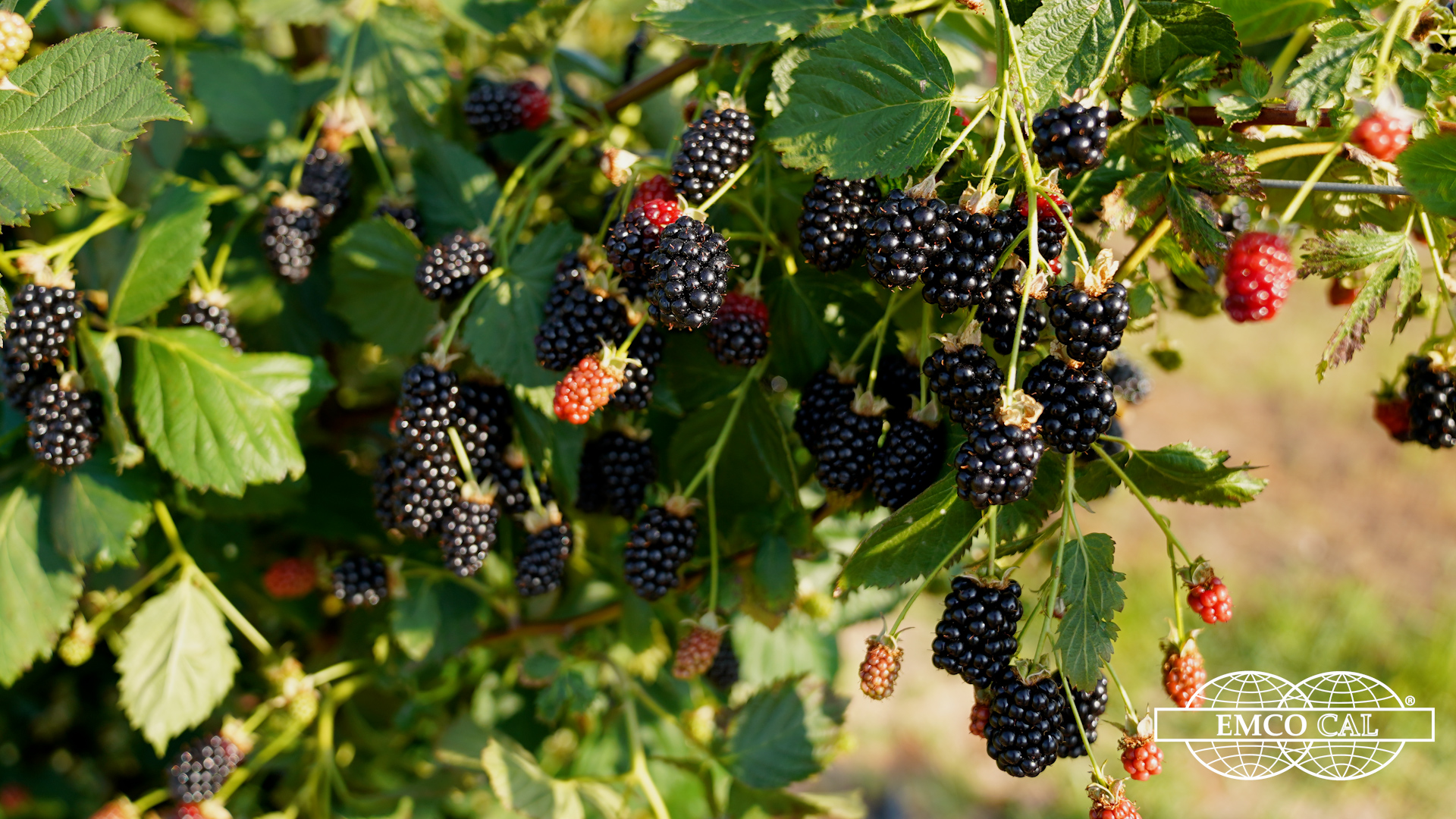Amanda™
(A-2491T)

Attributes
- Very low chilling requirement
- Potential for huge yields
- Fine flavor and interesting aromatics
- Consistent black, glossy color
- Erect and thornless canes
Fruit Characteristics
This new floricane-fruiting cultivar has thornless canes, larger fruit and higher yields compared to its female parent APF-46. Amanda™ (A-2491T) is lower in fruit acidity and smaller in fruit size than its male parent Natchez. Plants of the Amanda™ are vigorous and prolific and row establishment following planting is rapid. Primocanes and floricanes are erect. The canes can be trained to a self-supporting hedgerow although it is in beneficial to use a trellis with supporting wires to prevent canes from falling over due to wind or heavy fruit loads.
The bloom period of the Amanda™ cultivar begins at the end of April, very near that of APF-45 (Prime-Ark 45), Osage and Ouachita. Fruit of the new cultivar has an average first harvest date of second week of June and was very near that of Natchez and APF-45, little earlier than Osage and Ouachita. The average fruiting period is long, about 50 days. Fruit yields of the new cultivar on floricanes are on average 6 kg.
The fruits are long conical in shape, glossy with a uniform black finish. The primary floricane berries are large (avg. 9 g), next berries are lower (avg. 6 g). The overall postharvest storage potential of fresh fruit of the new cultivar is greater than that of Natchez (red drupelet reversion is substantially less). The fresh fruit rates very well in flavor and is a noteworthy attribute of the cultivar and is comparable to or exceeding that of Natchez. A primary fruit characteristic of Amanda™ is reduced acidity. The flavor is sweet and sub-acid with desirable aromatics.
Plants and fruit are resistant to anthracnose and plants have shown no evidence of susceptibility to orange rust. Bushes are hardy to minus 17 C.

